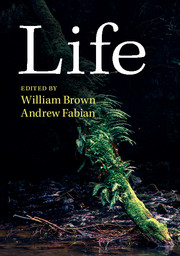Book contents
- Frontmatter
- Contents
- List of figures
- List of tables
- Notes on contributors
- Preface and acknowledgements
- 1 Life and death of a cell
- 2 The spark of life
- 3 From genomes to the diversity of life
- 4 Artificial life
- 5 Life in conflict: soldier, surgeon, photographer, fly*
- 6 Life in the ancient world*
- 7 Life in ruins*
- 8 The after-life*
- Index
3 - From genomes to the diversity of life
Published online by Cambridge University Press: 05 September 2014
- Frontmatter
- Contents
- List of figures
- List of tables
- Notes on contributors
- Preface and acknowledgements
- 1 Life and death of a cell
- 2 The spark of life
- 3 From genomes to the diversity of life
- 4 Artificial life
- 5 Life in conflict: soldier, surgeon, photographer, fly*
- 6 Life in the ancient world*
- 7 Life in ruins*
- 8 The after-life*
- Index
Summary
Introduction
A genome is the complete set of genetic instructions for an organism. For each of us, it is forty-six large molecules of DNA in the nucleus of every cell, each packaged into its own chromosome, together with many copies of a shorter fragment of DNA that lies in a specific compartment of the cytoplasm.
This genome makes us what we are, by determining, directly or indirectly, the structure of every complex molecule in our body. Together with a little help from the genomes in our parents, and our parents’ parents, it determines how our bodies are put together, and how they function, and how they interact with the myriad environmental influences before and after birth to make us what we are today.
Genomes are by no means the only, or even necessarily the best, level of organization at which to study how all these complex things happen, but they are interesting. In this chapter, I look at some of what we have learnt about life by studying genomes.
- Type
- Chapter
- Information
- Life , pp. 40 - 60Publisher: Cambridge University PressPrint publication year: 2014



